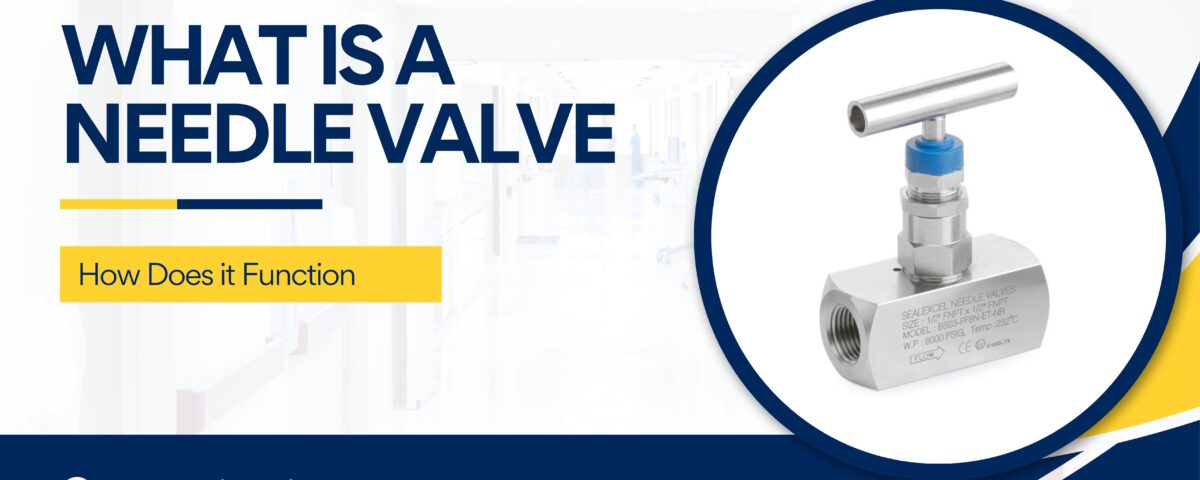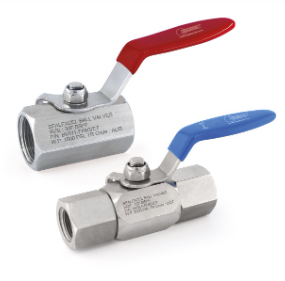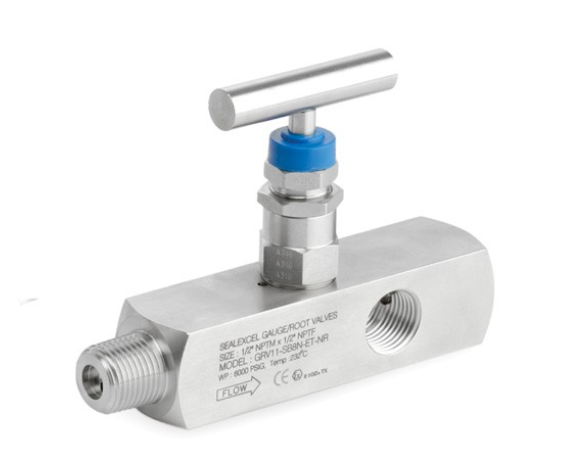
What Does A Coupler Pipe Do? What Are The Types Of Coupler Pipe?
May 28, 2023
What Is The Use Of SS Ball Valve?
June 5, 2023In various industries and applications, precise control of fluid flow is crucial. One of the devices commonly used for this purpose is a needle valve. A needle valve is a type of valve that allows for fine control of flow rates by using a tapered needle-shaped plunger to regulate the opening size. This blog post will provide an in-depth understanding of needle valves, their functioning, types, selection requirements, symbols, advantages, disadvantages, and various applications.
How Needle Valves Work
A needle valve consists of a threaded stem with a pointed conical tip, often referred to as a needle, and a matching threaded seat with a small orifice. The stem can be rotated to adjust the flow rate by changing the position of the needle in relation to the seat. As the needle is raised or lowered, the orifice size changes, allowing for precise control over the flow of the fluid passing through the valve. Needle valves are typically operated manually but can also be actuated using various means such as handwheels, levers, or pneumatic actuators.
Different Types of Needle Valves
a) Screwed Bonnet Needle Valve: This type of needle valve has a threaded bonnet that screws onto the valve body, providing a secure and leak-tight seal.
b) Union Bonnet Needle Valve: These valves have a bonnet assembly that can be completely detached from the valve body. Union bonnet needle valves are advantageous when frequent maintenance or cleaning is required.
c) Rising Stem Needle Valve: In this design, the stem rises as it is rotated, allowing for visual indication of the valve position.
d) Non-Rising Stem Needle Valve: The stem does not rise as it is rotated, making this type suitable for installations with limited vertical space.
Needle Valve Selection Requirements:
When selecting a needle valve, several factors need to be considered:
a) Operating Pressure and Temperature: Ensure that the chosen needle valve can handle the maximum pressure and temperature of the application.
b) Flow Rate: Determine the desired flow rate and select a needle valve with an appropriate orifice size.
c) Material Compatibility: Consider the compatibility of the valve materials with the fluid to prevent corrosion or contamination.
d) End Connections: Select the appropriate end connections (threaded, flanged, or compression fittings) to match the system requirements.
Needle Valve Symbol:
In process flow diagrams and engineering drawings, needle valves are represented by a specific symbol. The symbol consists of a straight line with a small triangle at one end, indicating the direction of flow. A diagonal line passing through the straight line represents the needle plunger, and the triangle represents the pointy end of the needle.
Needle Valve vs. Other Valves:
Needle valves have some distinct advantages and differences compared to other types of valves:
a) Globe Valves: While both globe valves and needle valves provide flow control, needle valves offer more precise and finer control due to their tapered needle design.
b) Ball Valves: Needle valves offer better flow control at lower flow rates than ball valves, which are typically better suited for on/off control.
c) Gate Valves: Unlike gate valves, needle valves can provide throttling or modulation of flow rates.
Needle Valve Advantages and Disadvantages:
Advantages:
- Precise flow control: Needle valves offer excellent control over flow rates, allowing for precise adjustments.
- Compact design: Needle valves are compact and can be installed in tight spaces.
- Versatility: They can handle a wide range of fluids and temperatures.
- Leakage prevention: Properly operated needle valves can provide a leak-tight seal, minimizing the risk of fluid leakage.
Disadvantages:
- Susceptible to clogging: The small orifice in needle valves is more prone to clogging by debris or particles in the fluid.
- Limited flow capacity: Needle valves are typically used for low to medium flow rates and may not be suitable for high-flow applications.
- Higher pressure drop: Needle valves can cause a higher pressure drop across the valve compared to other valve types.
Needle Valve Uses:
Needle valves find application in various industries, including:
- Process industries: Used in chemical, pharmaceutical, and petrochemical processes to control the flow of liquids or gases.
- Laboratories: Essential for precise control in laboratory equipment and analytical instruments.
- Hydraulic and pneumatic systems: Needle valves regulate flow rates in hydraulic and pneumatic systems.
- Automotive industry: Used in fuel systems, carburetors, and other applications requiring precise control over fluid flow.
Needle valves are essential components in systems where precise control of fluid flow is required. Their ability to provide fine adjustments and high precision makes them suitable for a wide range of applications. Understanding their functioning, types, selection requirements, and advantages and disadvantages will help in choosing the appropriate needle valve for specific system requirements.



